Several factors combined explain the late conversion to the sugar economy on Bourbon island, some natural, others political and economic. The island of Saint-Domingo produced 86,000 tonnes of sugar in 1789. The island ranked first on the world market, selling almost as much sugar as all the English islands added together. The violent revolt of the slaves which broke out on the island led to the independence of Haiti, declared in 1804. On the one hand, France had few solutions to compensate for the loss of the country’s important sugar-producing colony. In addition, the destructive cyclones that affected Bourbon island in 1806 and 1807 resulted in the island’s inhabitants turning to sugar production and thus to growing sugar cane, a crop resistant to cyclones.

Coll. Bibliothèque Nationale de France: French National library.
The slave trade practiced in the Indian Ocean was different from that in the Atlantic, an ocean which, until the voyages of Columbus, had been perceived as a barrier. The Indian Ocean, however, for thousands of years had been a unifying factor, uniting men through slavery, trade, wars and adventure, as well as through exchange of ideas and beliefs. We know for certain that the transport of slaves had been practised for centuries. The alternating seasons, notably the occurrence of the monsoon, recorded by the Greek Hippalos as early as the first century, regulated sea traffic. For four months each year, during the boreal winter, the winds from the North East would push vessels sailing from Arabia and the North West of India towards the east coast of Africa. During the summer, for a period of about six months, the winds blew from the South West, facilitating the return journey. The slave trade, taking on either a legal or an illicit character, had existed over the whole of this huge ocean zone for centuries. Unlike the trade taking place in the Atlantic, European slave traders in the zone were able to integrate their trade within traditional practices and it was perhaps thanks to these that they were able to impose their demands and innovations. Inside this “thousand-year space”, the colonisers encountered societies that had been
structured for centuries. Paradoxically, the space also presented uninhabited territories, such as the Mascareignes or the Seychelles, whereas the Atlantic, a “barrier-space”, led them to the discovery of islands, as well as a continent, that were already inhabited.

J. de V. Allen emphasises the existence of three strata of unity within this ocean. The first was born out of migrations, notably Austronesian, formerly referred to by the more explicit term of Malayo-Polynesian. The second was marked by the cultural influences of the Indian subcontinent and the third linked to Islam. H.N. Chittick considers that the Indian Ocean was “the world’s largest cultural continuum during the first 15 centuries of our era.” The slave, through the violence of which he or she was victim, was a factor of division. But he was also an element of the “cultural continuum”, a unifying factor. Slavery, an insult to civilisation, was also a fact of the civilisation. Languages, religions, recipes and various other aspects of the society today bear the traces of slavery and the slave trade.

The justifications given for the slave trade and slavery were many and various. According to P. Labat, Louis XIII had “a great deal of difficulty consenting to the fact that the first inhabitants of the islands possessed slaves, and only consented when it was demonstrated to him that this was the sole and infallible means to instil in Africans the worship of the true God.” As for Louis XVI, he showed a deeper degree of cynicism, appearing to pay greater attention to the terrestrial virtues of Christianity than to its distant objectives, when, in the terms of the missive addressed to the governor of French Guyana, he declared that: “It is above all through the limits imposed by religion that slaves, too miserable through slavery itself and also insensitive to honour, shame and punishments, may be contained.”
For Delabarre de Nanteuil, it was the notion of climate that was advanced: “It is recognised that Europeans cannot work the land in these torrid zones without endangering their existence and that only Africans may be employed to this aim, principally those inhabiting countries lying closest to the Equator.” The author did not exclude the possibility of entrusting agricultural tasks to free Africans from these regions. If we read a little further on, we can find the following quote, taken from Essai de Statistique de l’île Bourbon by Thomas: “Man only works to satisfy his needs and the projects of his ambitions. Africans have no notion of ambition and few needs. Abandoned to his own will, he will do nothing (…) to take him out of this inertia, it is necessary for him to be submitted to orders given by others.” The conclusion of Nanteuil, expressed almost immediately, was the following: “Without any doubt, these were the motivations that led the first settlers of the colony to adopt the system of slavery.”
It is certain that the various measures aimed at forbidding the slave trade, imposed sporadically as from the 17th century, had only limited consequences in the southwest Indian Ocean. The elements put forward, whether religious, climatic or economic, provided slave owners and the inhabitants with an array of justifications, leading them to turn a deaf ear to all injunctions. The attitude of the authorities, administrative, military or judiciary, was, most often, that of hesitation. In the face of legislation that was ill adapted to the necessities of repression, lacking sufficient material means and themselves unconvinced of the legitimacy of any action, most of those who should have made efforts to combat the slave trade opted to adopt an attitude of passivity, even complicity. This conclusion can be arrived at through the observations made by certain clear-sighted contemporaries. Would the geopolitical and legislative transformations that affected the Mascareignes during the early decades of the 19th century bring any transformations and change the behaviour of the actors concerned?
We can also note that even during periods when slave trading was perfectly legal, vessels would trade illicitly, for various reasons of a public character, for example to avoid taxes or for diplomatic reasons. There were also private factors, for example a conflict between the ship-owner, the supercargo and the captain. In addition, during various periods, certain destinations were forbidden, either by the authorities of the supplying country, or by those of the place from where the vessel was to set sail. C. Wanquet notes, for example, that in the 18th-century “the prohibition, imposed episodically, for private vessels to continue trading in slaves in Madagascar, was more or less ignored.” What is certain is that on Bourbon island “the years 1769 to 1793 represented the peak of the slave trade”: it is highly likely that 3,000 new slaves arrived on the island each year. However, there remains uncertainty over the exact numbers, in particular as regards the trade from Madagascar, the scale of which is difficult to assess for the period when the trade was made illegal for private traders.
Another characteristic of the trade, at the turn of the two centuries, noted by A. Toussaint: “The race to dominate the Mascareignes reached its peak during the French Revolution and the period of the Empire. The war was above all one of supplies, the islands, being cut off from France, could thus not meet their own needs. Merchants from neutral countries (America and Denmark) would come to purchase the necessary booty and replenish the privateers. From 1793 to 1810, 104 privateers carried out 304 successful attacks (…) only undergoing losses of 31 vessels (…). The most famous was Robert Surcouf, who alone seized 47 vessels. He would also at times trade in slaves.
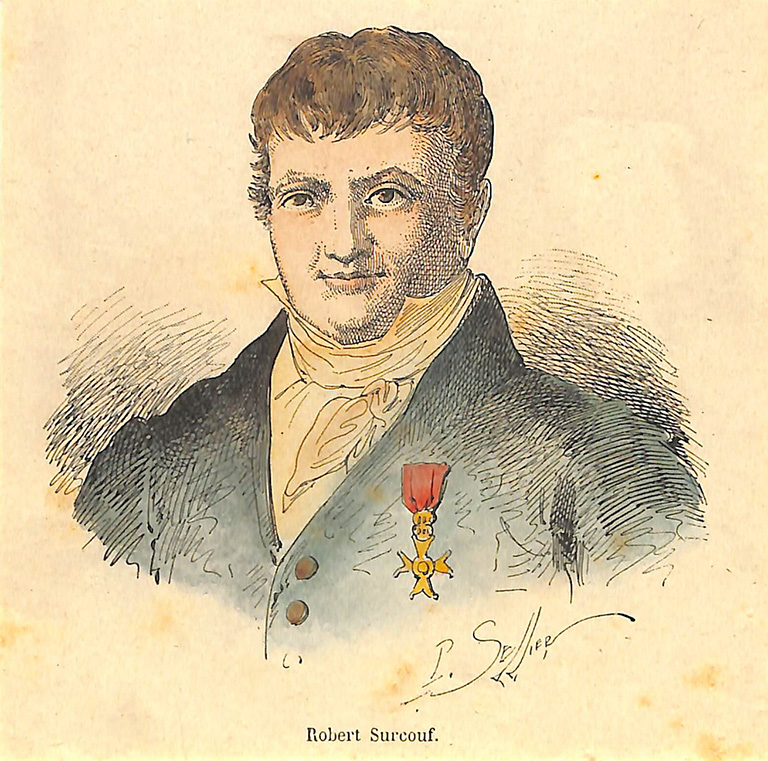
Reunion island armed a small number of privateers, only ten or so, but played a role that was was far from negligible. The island regularly supplied weapons and provisions, as well as marksmen bearing the name of ‘volontaires de Bourbon’ (Bourbon volunteers). When the île de France (now Mauritius) was blocked by British vessels, the privateers from Port-Louis and their prisoners found refuge on the neighbouring island.”
It was mainly the damage inflicted on the British by the privateers that was recorded, but their field of action was actually far wider.
When the British took over Bourbon island on 9th July 1810 and the Ile de France on 3rd December, this was followed, on 14th May 1811, by an attempt to apply the 1807 British legislation, prohibiting the slave trade, to the Mascareignes.
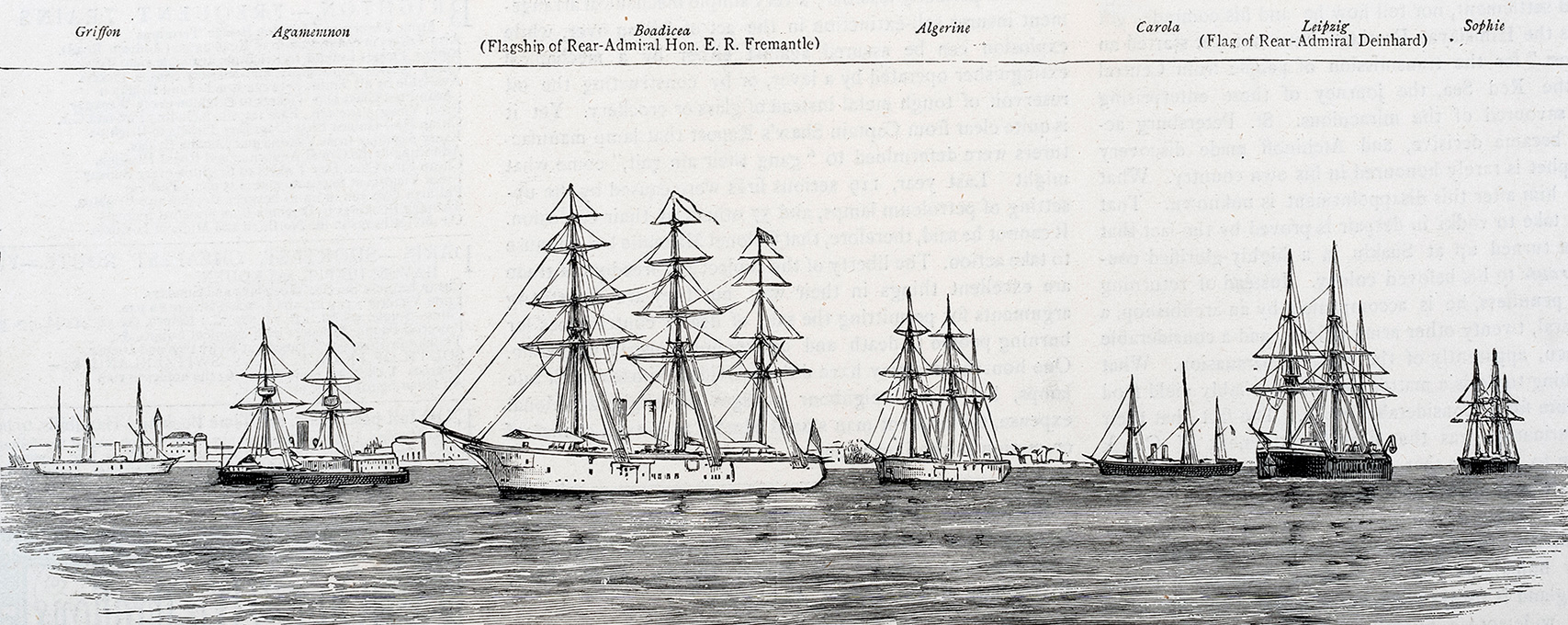
Any wrongdoers were to be declared “guilty of a felony and transported overseas to serve a sentence not exceeding 14 years or imprisoned and sentenced to maximum of five years and a minimum of three years of forced labour.” In the months following this decision, the “wrongdoers” do not appear to have been taken to justice with any great degree of zeal.
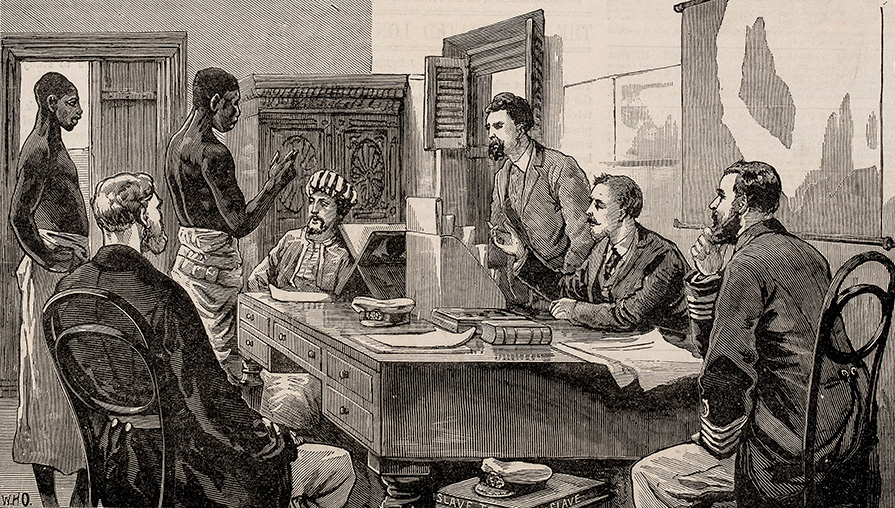
As was revealed by the enquiry carried out by the commissioners sent to Mauritius between 1826 and 1828, the trade continued, authorised or not, the means applied to eradicate it turned out to be ineffective and a large number of successful operations were carried out thanks to the passivity or even the participation of the authorities and at times thanks also to the support of the neighbouring Bourbon island.
A conflict soon broke out on the island between the governor and the magistrates, who refused to sentence inhabitants caught red-handed, on the pretext that the Abolition Act issued by King George III had never been published nor recorded on Bourbon island. In Mauritius, however, the courts were obliged to register the Act, doing so on 14th July 1813. On 2nd February 1813, order was sent to Port-Louis with the aim of “obliging the Civil Commissioners in the future to apply the procedure (…) indicated for detecting any breaches of the laws concerning the abolition of the trade of Africans” on Bourbon. Here, however, in July 1813, the lower court refused to take a ruling concerning a vessel carrying slaves, the argument being that the laws which prohibited the slave trade had not been registered by the courts of Bourbon. In November, the court of appeal confirmed the ruling.
Nevertheless, the repression started to be applied on Bourbon, but those responsible for carrying it out showed a great deal of indulgence and hesitation regarding seizing vessels, inspecting property or carrying out arrests, all of which continued to provoke protests from those concerned, as well as from certain magistrates. As an example, we can note the case of the schooner Joséphine: the vessel and the Africans “presumably introduced” by the latter were seized. The public prosecutor, general Virieux, considered these arrests to be “irregular and arbitrary”, adding that they began on Bourbon in December 1813 and that they were continuing.
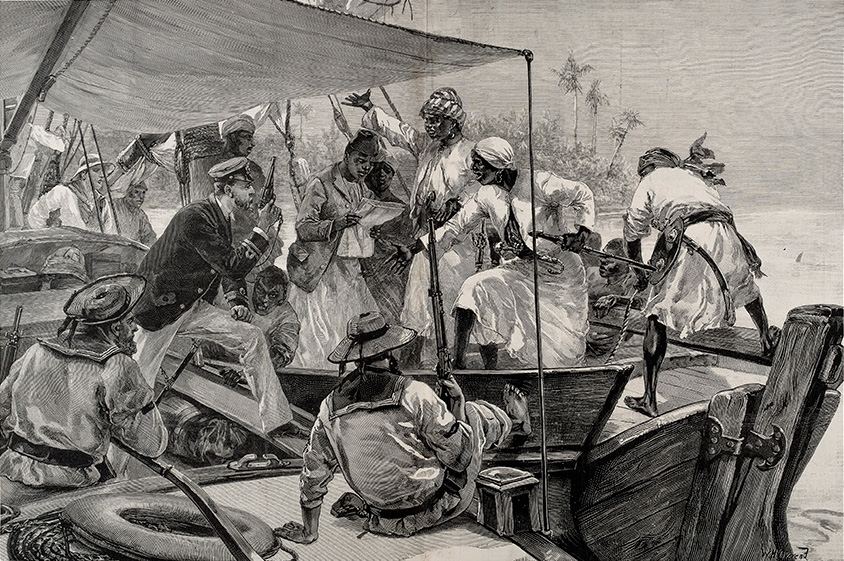
Lescouble referred to two cases of capture of slave ships, taking place in December 1814 and producing mediocre results:
“The ship Maguenette captured the vessel commanded by Suzor and carrying Africans. The captain was arrested and second mate, a Creole from here, escaped from jail. Falmon, the ship-owner, has also fled and a reward of 2 000 ptres (piasters) is promised to anyone capturing him. In recent days, the same corvette also arrested another vessel, that was taken to St-Paul but immediately released.”
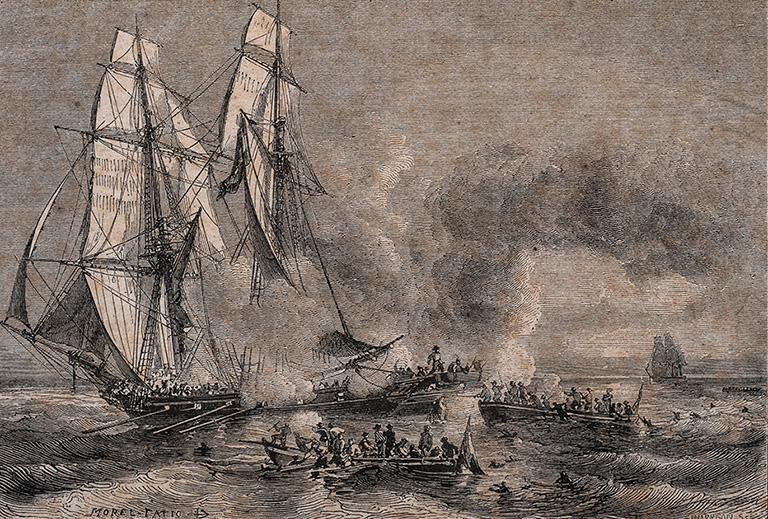
Coll. Villèle museum.
Certain slave traders, fearing to be sentenced in Mauritius, apparently took advantage of the situation to take refuge on Bourbon island. A reminder of this was made a few years later concerning the activities of a certain Salmon, “owner of a vessel called the Aglaé”, who was accused of transporting “164 negroes”, in 1814 and then settling in the neighbouring island.
“Denunciations concerning apparently newly-arrived Africans” could be made “at any time, on the basis of truth or malevolence” and the zeal shown by the occupying British in chasing suspects sometimes went beyond the limits of what was legal, at least as regards the limits defined by an administrative and legal structure partly manned by French staff, more eager to apply the letter than the spirit of the repressive legislation. The case of a certain major Bayly, who apparently confused fugitive slaves with new arrivals and took the initiative of carrying out home visits and illegal seizures, was noted by the legal Commissioner.
Following the signature of the first Treaty of Paris on 30th May 1814, the decision was taken to return Bourbon island to France. The island was handed over by the British on 6th April 1815. “Repossession” came under the responsibility of Bouvet de Lozier, the new French governor, who was to administer the island until 1817.
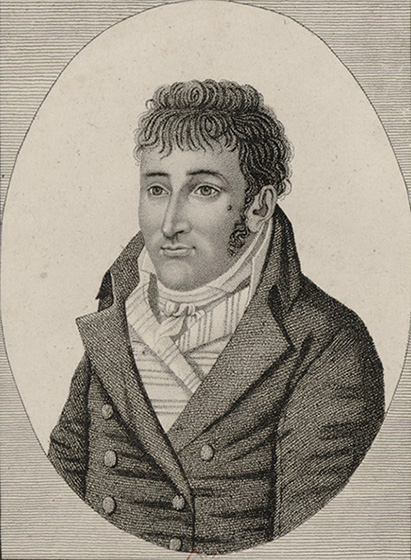
Five weeks earlier, on 1st March, Napoleon disembarked at Golfe-Juan and on the 20th of the same month, regained possession of Paris.
When news of the return of Louis XVIII to the French throne arrived at the Mascareigne islands, the British renounced taking action on Bourbon. At the start of his reign, the King committed himself to uniting with the British in their efforts to make all Christian countries eradicate the slave trade.
As from 1815, initiatives taken on the local level poisoned relations between the authorities of the two islands. Now rivals, they disagreed concerning their respective presence in Madagascar. It was the question of the slave trade in Madagascar that presented the governor of Mauritius with an excuse to reaffirm the rights he claimed over the trading posts occupied in Madagascar by France.
The heart of the matter, in the case of illicit trading on Bourbon in the 19th century, occurred under the French Restoration and the early days of the July Monarchy, an issue which would have been presented differently if sugar cane had not undergone such a rapid expansion during this same period. The development of the crop is thus presented as one of the consequences of the slave trade and which, through its reinforcement, appears also to be one of the most certain causes of its persistence.
Five ports in mainland France each put out to sea one slave ship: these were Bordeaux, Honfleur, Marseille, Paimbeuf and Saint-Malo. Nantes, the most important French slave trading port, alone sent out ten. Several slave vessels sailed from ports situated in the southwest Indian Ocean: one out of Zanzibar, one from Mozambique and six from Mauritius. The largest contingent was supplied by Bourbon: 79 departures were declared and two others probable. On 48 occasions, the port or the place of departure of the slave ships remains unknown.
In most cases, what we can be certain of is that ships sailing out of Bourbon were armed by the inhabitants of the island, where numerous ship-owners resided and from where the majority of the crews were recruited.
Declarations such as those made by Misson could lead us to the conclusion that the slave trade brought in huge resources. However, we must not forget the presence of pirates in Madagascar between the end of the 17th and the start of the 18th centuries. According to Misson, the pirate from the south of France who founded the “Republic” of Libertalia in the Bay of Diego-Suarez, the profits could be considerable: “In Barbados, a slave costs between 750 and 1,250 pounds, while in Madagascar, with twelve pounds of goods, you can buy what you want. We obtained a healthy specimen in exchange for an old piece of clothing.” In the neighbouring Bourbon island, pirates themselves would deliver goods and slaves.
Closer to the French Restoration period, we can refer to the analysis made by C. Wanquet concerning the reinforcement of the repressive measures decided in 1796. He considers that we can “doubt the efficiency of this legislation, since the advantages of the illicit trade apparently outweighed all other considerations.”
Olivier Pétré-Grenouilleau writes: “On the subject of the profits made by the trade, the most extravagant figures have been quoted, popularising the idea of extraordinary profits made, often going beyond 100% for every journey undertaken. In fact, though acceptable for the period and when compared to other speculative activities, the average annual profits were fairly low: (4% to 6% for traders from Nantes in the 18th century).”
Without minimising the risks of seizure of vessels, it is probable that profits increased during periods of illicit trading. On Bourbon island, in the same year as slavery was abolished, an article was published in the press declaring that “under the regime” of illicit trading, profits were so high that you could “risk 3 to 5 ships in order to have the luck of saving just one.”
The south-west of the Indian Ocean, in the 19th century, appears to have been favourable to profitable activity: Serge Daget quotes the opinion expressed by a contemporary who noted the “impunity that enabled the slave traders to make huge profits: 200%, 300%, allowing it to extend on Bourbon.”
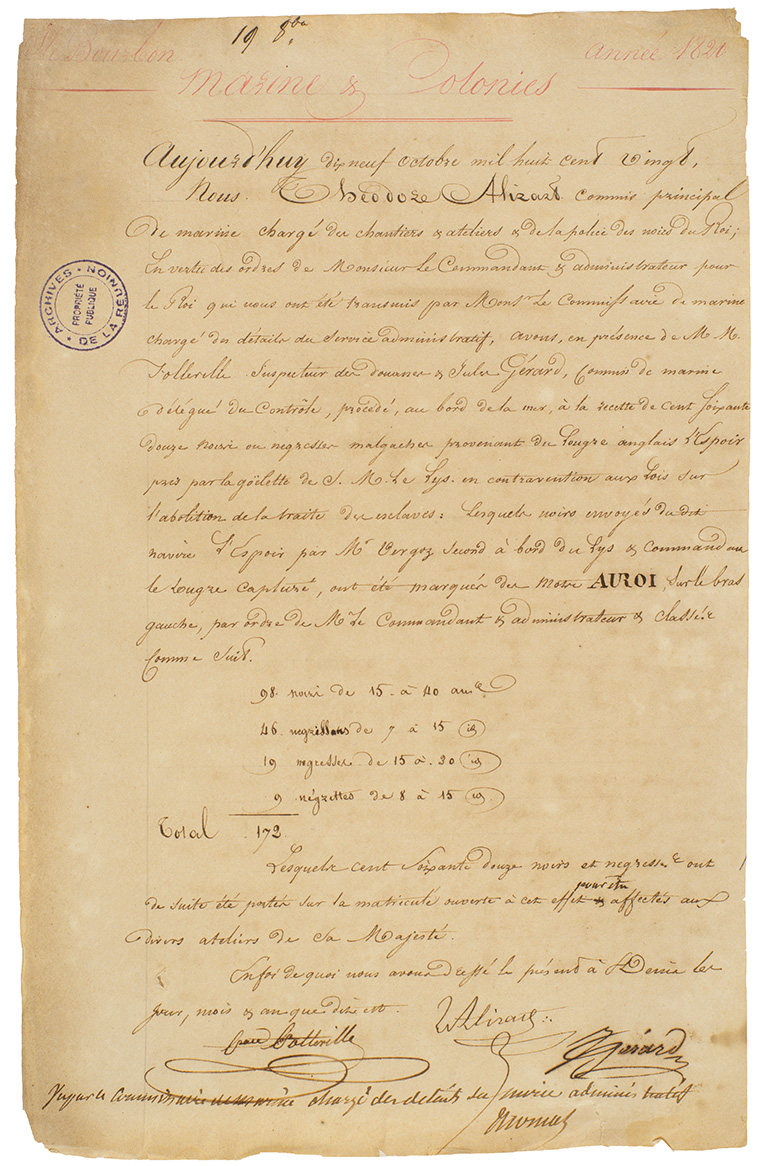
Nevertheless, the tragic destiny that befell young Busschop could lead us to believe that the trade sometimes caused the ruin of those who practised it. Charles François Busschop, born in 1797 and son of a high-ranking magistrate, adviser to the Cour de Cassation (the highest French court), arrived on the island hoping to do business. He disembarked on Bourbon in 1818, then left for the neighbouring islands. Dayot, “an agent of the French government” occupying a post in à Tamatave, gave a few details of the affair. He wrote that Ch. Busschop had arrived here from the Seychelles “on the small schooner L’Espoir, formerly La Bamboche and then Lafara, captured after being caught smuggling along the coast of Bourbon, then sent back here.” The changing names given to the vessel were linked to its slave-trading activities. Dayot then noted that: “Busschop caught a fever, (…) his disease becoming more serious each day and, in the absence of any care, found himself in dreadful misery, dying on 6th June 1819.” Information provided by the local authorities throws some light on the abhorrent activities and attitude of a cynical and naïve young adventurer from a good family, who died at the age of 22 from having been dazzled by what Toussaint referred to as “the mirage of the islands.”
The misadventures of Busschop must not blind us to the misery of the captives. The governor Milius wrote to the Minister, declaring that the slave traders “appeared to enjoy violating all that is sacred (honour and humanity) in order to satisfy their vile cupidity,” and that they managed “through Barbarian refinery to practice their trade on longboats of 8 x 10 GRT, succeeding in loading up to 40 Africans on board these vessels.”
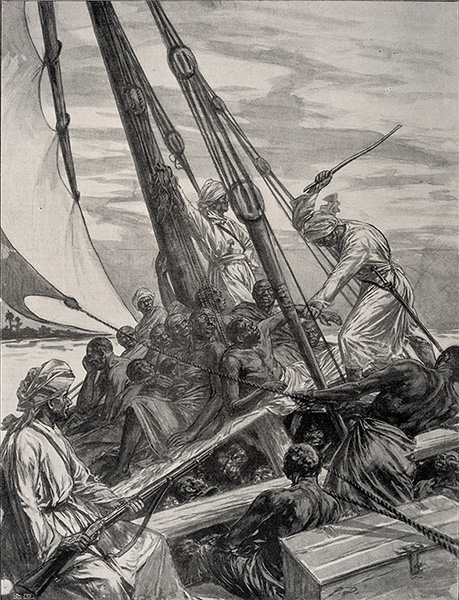
It is hardly necessary to increase the number of examples given. We can indicate, amongst others, the case of a few slave ships which, in addition to their crew, managed to cram 2 to 5 captives per registered tonnage (GRT): 200 Africans for the 70 GRT of the Deux-Frères (II) and again 200 for the 45 GRT of the Bon-Accord (II). On board the Mouche (I), a brig of 198 GRT which was later renamed the Caroline, 460 captives and on board the Victor (I), probably sailing from Bali, 260 “black Malaysians” for 93 GRT. The voyage of the vessel Joséphine (II) was shorter, since this 23 GRT slave ship sailed from Madagascar, but this was perhaps the vessel which, transporting 117 slaves, beat the record of the number of slaves, cramming into its hold 117 Africans, with more than five captives per GRT.
By “over-cramming” in certain cases five or even more than five captives per GRT, the slave ships illicitly supplying Bourbon by far exceeded the means encountered on the vessels sailing from Nantes during the final years of legal trade.

In addition to the horrendous conditions of transport often supported by the captives, many suffered from diseases they contracted before loading as a result of endemic and other diseases that were rife in the departure zone. One of the slave ships, for example, transported lepers. Smallpox and cholera were particularly feared and could be transmitted to the population on arrival.
Specific cases make it possible to define the percentages of mortality among the slaves, even in the absence of serious diseases. For example, the ship Cécile moored at Saint-Paul in January 1824. The governor impounded the ship and transferred the Africans to the “atelier du Roi” (King’s warehouse). 150 captives had left Lindy, in Africa, in August 1823. The voyage apparently caused 39 of them to die, a considerable loss amounting to 26%. Less than two years after the arrival of the remaining 111 Africans, only 34 of the latter remained in the workshop. The group of captives that had embarked at Lindy, in Africa, had already lost over one quarter of its members during the voyage and must have arrived on the island in such poor condition that within 23 months, over two thirds of the survivors had, in turn, been decimated.


The number of arrests carried out annually was derisory compared to the total number of captives imported. We can estimate that on average, between 1817 and 1830, the number of deaths exceeded births by at least 1,500 slaves per year. The number of slaves increased from approximately 52,000 in 1817 to 70 927 in 1830 , an increase of approximately 19,000 over a period of 13 years, whereas if we logically estimate the number of deaths, it should have diminished by 19,500 or so. We can, therefore, consider that globally 38,500 slaves were introduced over the period of 13 years, which represents approximately 3,000 illicit entries per year.
The illicit slave trade, very visible on Bourbon island up to 1833, without truly changing in character, very early on took on the from of a “supply” of workers referred to as being “free”, the first representatives being recruited in India in 1828. Over a period of 20 years, the traders took advantage of the surprising concurrence on the island of the two systems of production and followed the model of the coolie trade, a system that the employers on Bourbon soon started to apply on a large scale, requiring an abundant supply of workers from India, but also from Africa and Madagascar.